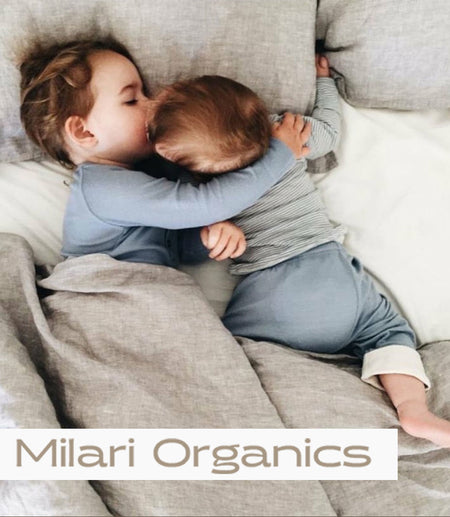The importance of choosing a non toxic mattress for your little one

Creating a low toxic sleep environment for your little one is very important for their health as they spend the majority of the day sleeping to support their rapid mental and physical development. Babies are particularly vulnerable to toxic chemicals due to not having the detoxification capacity that adults have. Unfortunately it can feel like a bit of a minefield when navigating what is toxic in the home, so hopefully this article will shed some light on how to choose a non toxic mattress that will support your baby’s health and development.
What chemicals are in commercial mattresses?
Volatile organic compounds (VOC’s) refer to a large group of chemicals that are found in many common materials and products used around the home. Once these chemicals are in our homes, they are released or “off-gas” into the indoor air we breathe. Different VOCs have different health effects and range from those that are highly toxic to those with unknown long term health effects.
Research from the journal of environmental science and technology conducted a study to determine the area specific emission rates of VOC’s in a collection of twenty new and used cot mattresses. All mattress samples were found to emit VOC’s, the amount being greater from new mattresses compared to used ones and the severity depending on the type of foam material and the presence of mattress cover layer. Polyurethane foam released the greatest diversity of VOC’s compared to polyester foam. This study suggests that cot mattresses are an important source of VOC’s and can result in an elevated exposure to infants.
Phthalates are chemicals used as plasticizers and are known endocrine disruptors. Endocrine disruptors interfere with the body’s delicate hormonal systems and have been linked with reproductive, developmental and behaviour problems. As the phthalate plasticizers are not chemically bound to PVC, they can leach, migrate or evaporate into indoor air and atmosphere, food and other materials.
In infant sleep microenvironments, an increase in the temperature of mattresses can cause a significant increase in the emission of phthalates from the mattress cover and make the concentration in the infant’s breathing zone about four times higher than that in bulk room air, resulting in potentially higher exposure.
Flame retardants are a class of chemicals used in polyurethane foam mattresses and other household items such as furniture, textiles, carpets and electricals. Due to the extensive use of flame retardants there is an increase in concentrations of these chemicals in the environment and human tissues, with traces being found in our food chain and even breast milk. Fire retardants bioaccumulate in the body and research has shown that the highest levels of these chemicals have been reported in children, likely due to the amount of these chemicals used in children’s products.
Certain fire retardants have been linked with cancer, endocrine disruption, toxicity, and lower IQ.
What should you look for in a mattress?
- Avoid mattresses made with materials and chemicals such as polyurethane foam and chemical flame barriers or other flame retardant chemicals, formaldehyde, pesticides, glues or other chemical adhesives, and GMOs.
- Avoid mattresses made with potential allergens like latex or soy (including so-called soyfoam or ecofoam).
- Look for mattresses that are waterproofed with food-grade polyethylene and not with vinyl or perfluorinated compounds or other questionable materials.
- The healthiest mattresses are made with organic cotton, organic wool, organic latex and individually encased coils.
- Look for all bedding, including sheets, pads, toppers, blankets, comforters, etc. made from natural fabrics like organic cotton and wool that are free from harmful chemicals.
- Open the windows in your bedroom for a minimum of ten minutes prior to sleep to reduce any build-up of volatile organic compounds (VOCs) that may exist in the room due to off-gassing from any of the chemicals mentioned above.
My go to pick for mattresses in Australia are created by Milari Organics. Why? Because they are created from:
- 100% organic, natural dunlop latex rubber, which allows air to circulate naturally, is antimicrobial so contaminants are not able to grow, is VOC free – ensuring no harmful chemicals are being inhaled by your little one
- 100% Australian wool
- Has a coconut coir which is a natural flame retardant, antimicrobial and provides a firm sleep surface
- The inner mattress cover is made from 100% GOTS organic certified cotton
- The outer layer is created from premium organic bamboo lyocell which is hypoallergenic, antimicrobial and thermoregulating to help keep baby cool in summer and warmer in winter.
You can visit Milari Organics here.
















